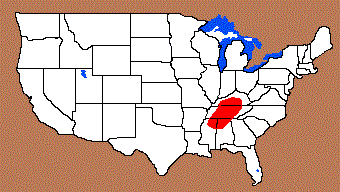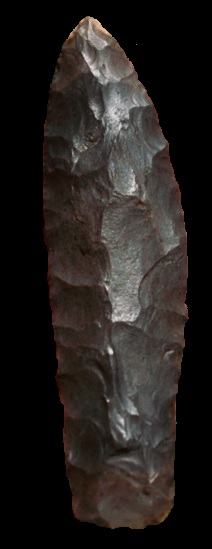Outline is Representative of Size and Shape:

Name Details:
Identified By:
Named For:
Date Identified:
Type Site:
Identified By:
Named For:
Date Identified:
Type Site:
Point Validity:
Collector type
This blade is listed in Overstreet's book, but no professional references to this type was located. This is considered a collector type.
This blade is listed in Overstreet's book, but no professional references to this type was located. This is considered a collector type.
Cotaco Blade
Collector TypeCluster:
Description of Physical Characteristics and Flaking Pattern:
This is a medium to large lanceolate blade with an elliptical cross section. This blade has an excurvate shape and may have parallel notches at the point of hafting. The base ranges from straight to convex. This blade has a random flaking pattern.
Size Measurements:
Total Length - 130 to 190 mm, Max. Blade Width - 36 to 59 mm, Basal Width - 20 to 30 mm (***based on small sample size***)
Total Length - 130 to 190 mm, Max. Blade Width - 36 to 59 mm, Basal Width - 20 to 30 mm (***based on small sample size***)
Commonly Utilized Material:
Fort Payne Chert, Bangor Nodular Flint, jasper, and other local materials.
Fort Payne Chert, Bangor Nodular Flint, jasper, and other local materials.
Additional Comments:
This is a large blade found in association with other Cotaco Creek points.
This is a large blade found in association with other Cotaco Creek points.
Distribution:
Distribution Comments:
This point is primarily found through out Tennessee River Valley and adjacent areas.
This point is primarily found through out Tennessee River Valley and adjacent areas.
Age / Periods:
Date: 2,500 - 2,000 B.P.
Cultural Period: Woodland
Glacial Period: Neoglacial to Roman Warm
Culture:
Date: 2,500 - 2,000 B.P.
Cultural Period: Woodland
Glacial Period: Neoglacial to Roman Warm
Culture:
Age Details:
Other points in this cluster / Related / Associated Points:
Cotaco Creek, Cotaco Wright, Dagger Knife, Duck River Blade, Morse Knife, Snake Creek Blade, Ramey Knife
Cotaco Creek, Cotaco Wright, Dagger Knife, Duck River Blade, Morse Knife, Snake Creek Blade, Ramey Knife

